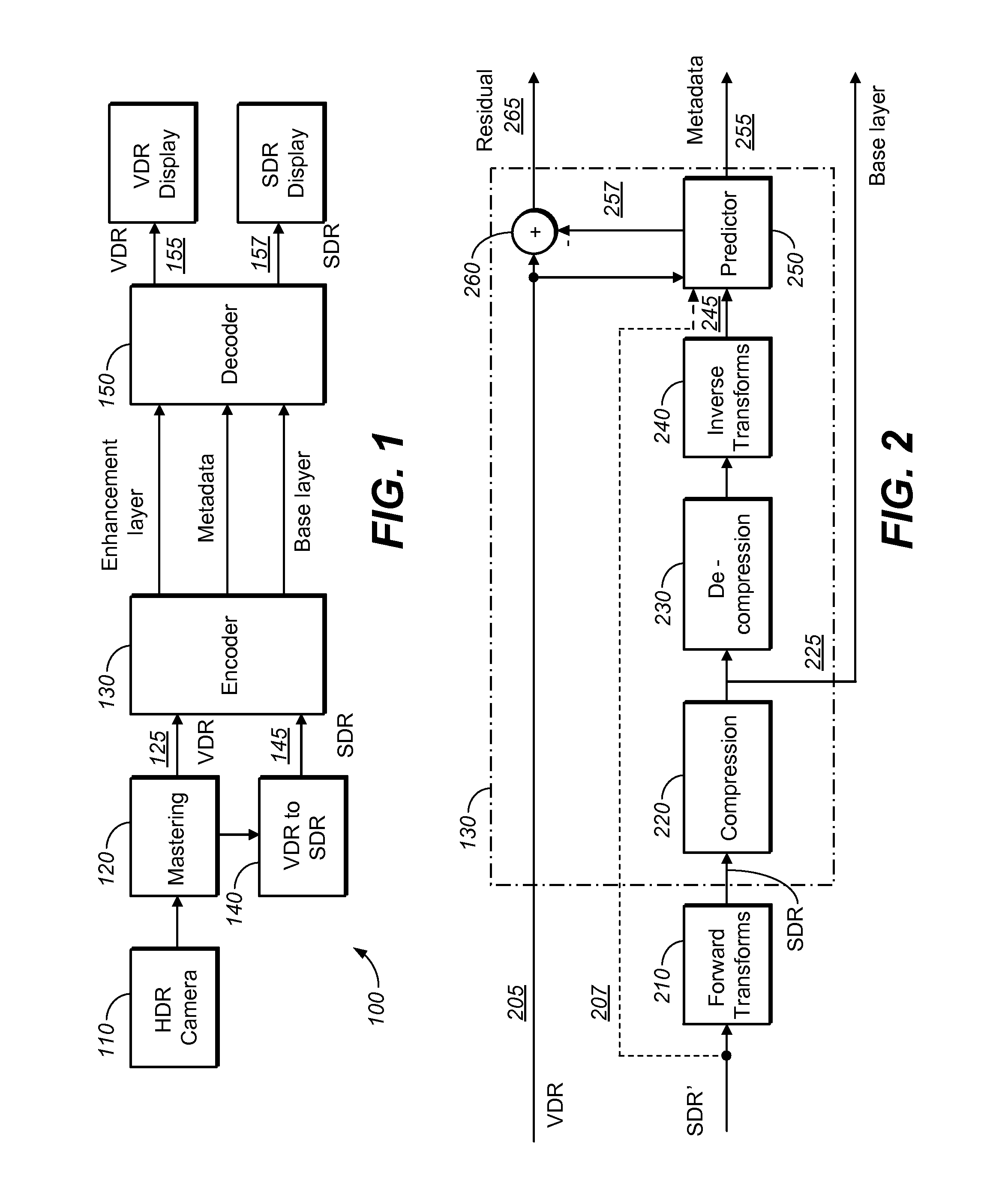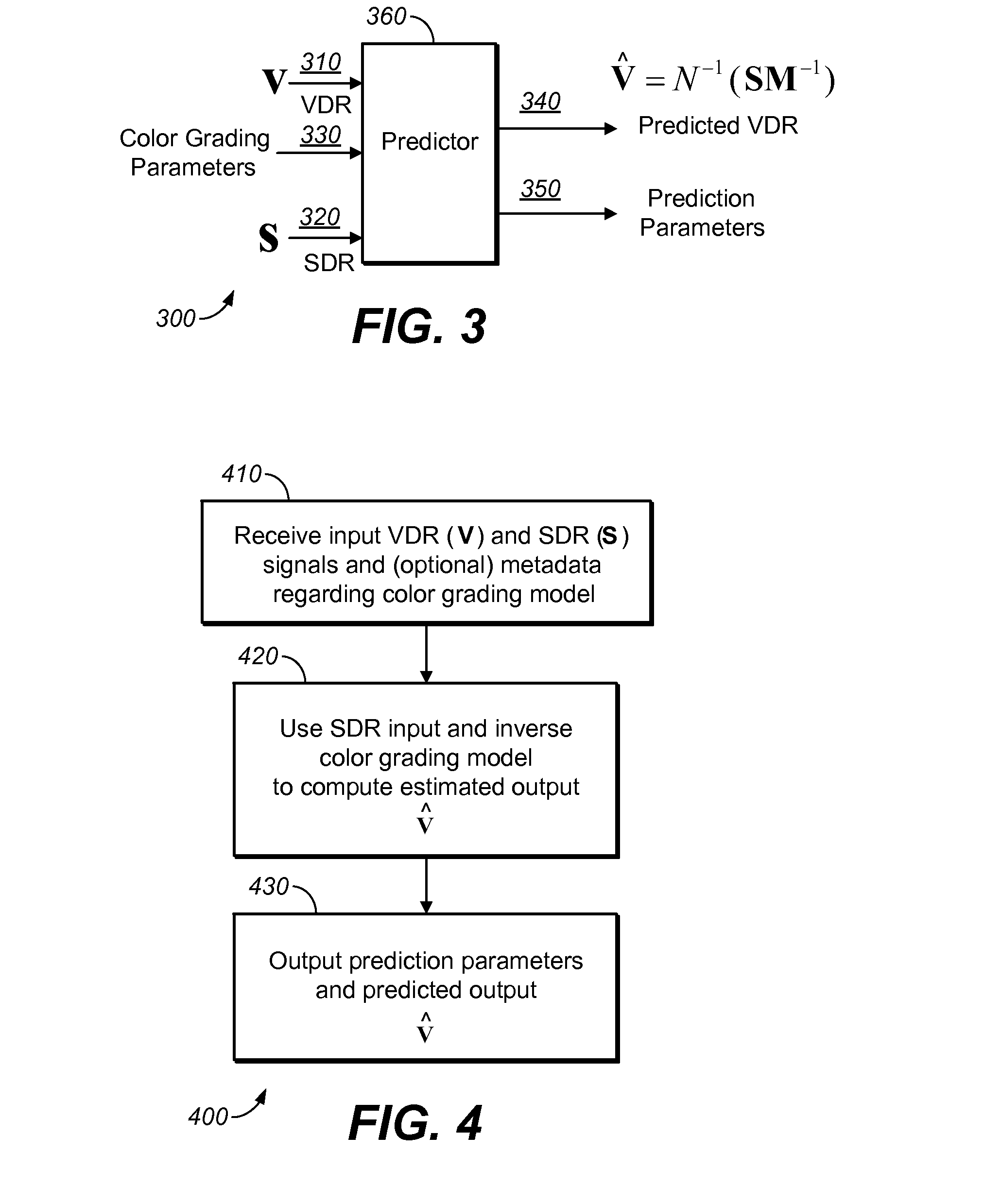Image Prediction Based on Primary Color Grading Model
a color grading model and image technology, applied in the field of image prediction based on primary color grading model, can solve the problem that the simultaneous transmission of both actual captured vdr content and sdr content may not be the best approach
- Summary
- Abstract
- Description
- Claims
- Application Information
AI Technical Summary
Benefits of technology
Problems solved by technology
Method used
Image
Examples
example notation
and Nomenclature
[0037]Assuming images are represented by pixels, where each pixel has n color components, in an example implementation where n=3, denote the three color components of the i-th pixel in the SDR image 320 as
si=[si1si2si3]. (3)
[0038]Denote the three color components of the i-th pixel in the VDR input 310 as
vi=[vi1vi2vi3]. (4)
[0039]Denote the predicted three color components of the i-th pixel in predicted VDR 340 as
{circumflex over (v)}i=[{circumflex over (v)}i1{circumflex over (v)}12{circumflex over (v)}i3]. (5)
[0040]Denote the total number of pixels in one color component as p. In equations (3-5), image pixels may be in RGB, YUV, YCbCr, XYZ, or any other color representation. While equations (3-5) assume a three-color representation for each pixel in an image or video frame, as also shown later, the methods described herein can be easily extended to image and video representations with more than three color components per pixel, or to image representations where ...
PUM
 Login to View More
Login to View More Abstract
Description
Claims
Application Information
 Login to View More
Login to View More - R&D
- Intellectual Property
- Life Sciences
- Materials
- Tech Scout
- Unparalleled Data Quality
- Higher Quality Content
- 60% Fewer Hallucinations
Browse by: Latest US Patents, China's latest patents, Technical Efficacy Thesaurus, Application Domain, Technology Topic, Popular Technical Reports.
© 2025 PatSnap. All rights reserved.Legal|Privacy policy|Modern Slavery Act Transparency Statement|Sitemap|About US| Contact US: help@patsnap.com



